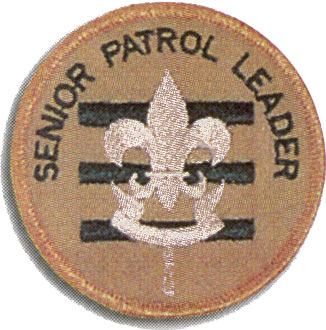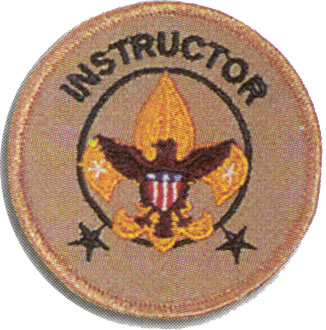What makes Scouting special is that YOU make the decisions!
That’s right! YOU run the troop. Baden-Powell made it very plain when he wrote,
“The best progress is made in those Troops where power and responsibility are really put into the hands of the Patrol Leaders.”
This is real decision-making power. And it’s not just Patrol Leaders. All troop leadership positions have a hand in making the Troop run. As a troop leader you will:
- Plan and run troop meetings,
- Pick troop outings, where to camp, what to do,
- Plan advancement opportunities for all troop members
- Select High-Adventure programs
- Determine troop policy
- Help other Scouts along the trail to Eagle.
The adults are there to provide support, but YOU will be making the decisions.
Because being a leader is more than just sewing on a patch, we have put together job descriptions for the troop leadership positions. They will give you a good idea of what each job is all about and what you will be required to do.
Here’s how to be considered for a position. First read the job descriptions, qualifications, and job responsibilities. Then decide what you want to do and talk it over with your parents. You can also talk it over with other Scouts who have served in that position. Finally, get a Leadership Position Application Form, fill it out, have your parent(s) read and sign it and turn it in.
So, are you ready to “Lead the way”?
Leadership Position Description
Type: Elected by the members of the troop
Term: 6 months
Reports to: Scoutmaster
Description: The Senior Patrol Leader is elected by the Scouts to represent them as the top junior leader in the troop.
Comments: The junior leader with the most responsibility in a troop is the senior patrol leader. He is elected by all members of the troop. Each troop sets its own requirements and schedule of elections, though senior patrol leaders are usually chosen at six-to-twelve-month intervals and can be re-elected. During a Scout’s tenure as senior patrol leader, he is not a member of a patrol. The senior patrol leader of an established troop is often selected from among experienced Scouts of a certain age and rank. In a new troop or a troop without older members, boys are still likely to choose a Scout whom they respect and believe will provide the best leadership. The patrol leaders’ council might offer an opportunity for those in the running to make short presentations to the troop, explaining their qualifications and reasons for seeking the office. This provides good practice for the candidates and enables those who do not know them well, younger Scouts in particular, to gain a better sense of what they propose to do for the troop. The senior patrol leader oversees troop meetings from beginning to end. He chairs meetings of the patrol leaders’ council as they plan troop activities and programs. In short, the senior patrol leader’s job is to see that the troop runs in an orderly and timely manner. The relationship between a senior patrol leader and his Scoutmaster is often one of friendship and mutual admiration.
Age: none
Rank: 1st Class or higher
Rank: Previous service as SPL, ASPL, PL, or APL
Attendance: Active* scout over the previous 6 months. *See Troop Guide for Parents and Scouts for a detailed description of an “Active Scout”.
Training: Recommend attending the National Youth Leader Training and Troop Youth Leader Training even if you have attended in the past.
Attendance: You are expected to attend troop meetings, Patrol Leaders’ Council meetings, outings, and service projects. If your attendance is low, or if you have three (3) unexcused absences in a row, you can be removed from office.
Effort: You are expected to give this job your best effort.
Uniform: Set the example by wearing your uniform correctly. This means that you will wear all parts of the troop uniform, shirttail tucked in, with all required badges in their correct locations.
Behavior: Set the example by living the Scout Oath and Law in your everyday life. Show Scout Spirit in everything you say and do.
Attendance: Set the example by being an active Scout. Be on-time for meetings and activities. You must call the Scoutmaster if you are not going to be at a meeting or if you suddenly must miss an outing. You also need to make sure that the Assistant Senior Patrol Leader is ready to assume your responsibilities.
- Runs all troop meetings, events, activities, and the annual program planning conference.
- Runs the Patrol Leader’s Council meeting.
- Appoints other troop junior leaders with the advice and counsel of the Scoutmaster.
- Assigns duties and responsibilities to junior leaders.
- Assists the Scoutmaster with Junior Leader Training.
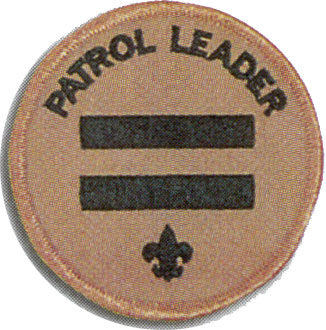
Leadership Position Description
Type: Elected by members of the patrol
Term: 6 months
Reports to: Senior Patrol Leader
Description: The Patrol Leader is the elected leader of his patrol. He represents his patrol on the Patrol Leader’s Council.
Comments: The Patrol Leader may easily be the most important job in the troop. He has the closest contact with the patrol members and is in the perfect position to help and guide them. The Patrol Leaders, along with the Senior Patrol Leader and Assistant Senior Patrol Leader are the primary members of the Patrol Leaders’ Council. One patrol leader is elected by the members of each patrol. He takes responsibility for the patrol’s activities and represents the patrol as a member of the patrol leaders’ council. Each patrol leader appoints an assistant patrol leader to serve with him.
Age: none
Rank: none
Rank: none
Attendance: Active* scout over the previous 6 months. *See Troop Guide for Parents and Scouts for a detailed description of an “Active Scout”.
Training: You must attend the troop Junior Leader Training even if you have attended in the past.
Attendance: You are expected to attend troop meetings, Patrol Leaders’ Council meetings, outings, and service projects. If your attendance is low, or if you have three (3) unexcused absences in a row, you can be removed from office.
Effort: You are expected to give this job your best effort.
Uniform: Set the example by wearing your uniform correctly. This means that you will wear all parts of the troop uniform, shirttail tucked in, with all required badges in their correct locations.
Behavior: Set the example by living the Scout Oath and Law in your everyday life. Show Scout Spirit in everything you say and do.
Attendance: Set the example by being an active Scout. Be on-time for meetings and activities. You must call the Senior Patrol Leader or Scoutmaster if you are not going to be at a meeting or if you suddenly must miss an outing. You also need to make sure that the Assistant Patrol Leader is ready to assume your responsibilities.
- Appoints the Assistant Patrol Leader.
- Represents the patrol on the Patrol Leader’s Council
- Plans and steers patrol meetings
- Helps Scouts advance
- Acts as the chief recruiter of new Scouts
- Keeps patrol members informed
- Knows what his patrol members and other leaders can do.
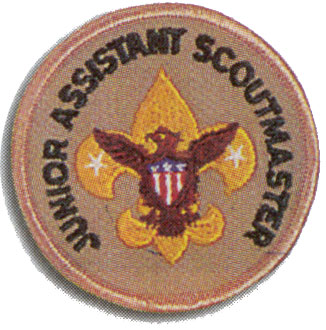
Leadership Position Description
Type: Appointed by the Scoutmaster
Term: 1 year
Reports to: Scoutmaster
Description: The Junior Assistant Scoutmaster serves in the capacity of an Assistant Scoutmaster except where legal age and maturity are required. He must be at least 16 years old and not yet 18. He’s appointed by the Scoutmaster because of his leadership ability.
Comments: In many cases the JASM has the same responsibilities as an Assistant Scoutmaster.
Age: At least 16 years old
Rank: Eagle
Rank: Previous leadership positions
Attendance: Active* scout over the previous 6 months. *See Troop Guide for Parents and Scouts for a detailed description of an “Active Scout”.
Training: You must attend the troop Junior Leader Training even if you have attended in the past.
Attendance: You are expected to attend troop meetings, Patrol Leaders’ Council meetings, outings, and service projects. If your attendance is low, or if you have three (3) unexcused absences in a row, you can be removed from office.
Effort: You are expected to give this job your best effort.
Uniform: Set the example by wearing your uniform correctly. This means that you will wear all parts of the troop uniform, shirttail tucked in, with all required badges in their correct locations.
Behavior: Set the example by living the Scout Oath and Law in your everyday life. Show Scout Spirit in everything you say and do.
Attendance: Set the example by being an active Scout. Be on-time for meetings and activities. You must call the Senior Patrol Leader or Scoutmaster if you are not going to be at a meeting or if you suddenly must miss an outing. You also need to make sure that someone will assume your responsibilities.
Functions as an Assistant Scoutmaster.
Performs duties as assigned by the Scoutmaster.
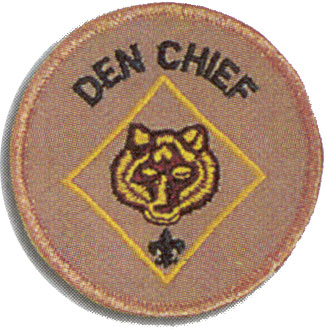
Leadership Position Description
Type: Appointed by the Scoutmaster
Term: 1 year
Reports to: Scoutmaster and Den Leader
Description: The Den Chief works with the Cub Scouts, Webelos Scouts, and Den Leaders in the Cub Scout pack.
Comments: The Den Chief provides knowledge of games and Scout skills that many Den Leaders lack. The Den Chief is also a recruiter for the troop. This function is important because no troop can thrive without new members and most new members will come from Cub Scouting.
Age: 14 or older
Rank: Star or higher
Rank: none
Attendance: Active* scout over the previous 6 months. *See Troop Guide for Parents and Scouts for a detailed description of an “Active Scout”.
Training: You must attend the troop Junior Leader Training even if you have attended in the past.
Attendance: You are expected to attend troop meetings, Patrol Leaders’ Council meetings, outings, and service projects. If your attendance is low, or if you have three (3) unexcused absences in a row, you can be removed from office.
In terms of attendance with your den, you are expected to attend den meetings and pack functions. You must inform the Den Leader if you will be absent.
Effort: You are expected to give this job your best effort.
Uniform: Set the example by wearing your uniform correctly. This means that you will wear all parts of the troop uniform, shirttail tucked in, with all required badges in their correct locations.
Behavior: Set the example by living the Scout Oath and Law in your everyday life. Show Scout Spirit in everything you say and do.
Attendance: Set the example by being an active Scout. Be on-time for meetings and activities. You must call the Senior Patrol Leader or Scoutmaster if you are not going to be at a meeting or if you suddenly must miss an outing. You also need to make sure that someone will assume your responsibilities.
- Knows the purposes of Cub Scouting
- Helps Cub Scouts advance through Cub Scout ranks.
- Encourages Cub Scouts to join a Boy Scout troop upon graduation.
- Assists with activities in the den meetings.
- Is a friend to the boys in the den.
- Helps at weekly den meetings and monthly pack meetings.
- Meets with adult members of the den, pack, and troop as necessary.
Leadership Position Description
Type: Appointed by the Scoutmaster
Term: 1 year
Reports to: Scoutmaster
Description: The Instructor teaches Scouting skills.
Comments: The Instructor will work closely with both the Troop Guide and with the Assistant Scoutmaster for new Scouts. The Instructor does not must be an expert but should be able to teach the Scoutcraft skills needed for Tenderfoot, Second Class, and First Class ranks. The troop can have more than one instructor.
Age: 14 or older
Rank: 1st Class or higher
Rank: none
Attendance: Active* scout over the previous 6 months. *See Troop Guide for Parents and Scouts for a detailed description of an “Active Scout”.
Training: You must attend the troop Junior Leader Training even if you have attended in the past.
Attendance: You are expected to attend troop meetings, Patrol Leaders’ Council meetings, outings, and service projects. If your attendance is low, or if you have three (3) unexcused absences in a row, you can be removed from office.
Effort: You are expected to give this job your best effort.
Uniform: Set the example by wearing your uniform correctly. This means that you will wear all parts of the troop uniform, shirttail tucked in, with all required badges in their correct locations.
Behavior: Set the example by living the Scout Oath and Law in your everyday life. Show Scout Spirit in everything you say and do.
Attendance: Set the example by being an active Scout. Be on-time for meetings and activities. You must call the Senior Patrol Leader or Scoutmaster if you are not going to be at a meeting or if you suddenly must miss an outing. You also need to make sure that someone will assume your responsibilities.
- Teaches basic Scouting skills in troop and patrols.
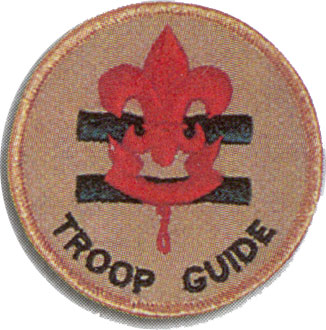
Leadership Position Description
Type: Appointed by the Scoutmaster
Term: 1 year
Reports to: Scoutmaster
Description: The Troop Guide works with new Scouts. He helps them feel comfortable and earn their First Class rank in their first year.
Comments: The first year as a Boy Scout is a critical time with new places, new people, new rules, and new activities. The Troop Guide is a friend to the new Scouts and makes first year fun and successful. This is an important position.
Age: 14 or older
Rank: 1st Class or higher
Rank: none
Attendance: Active* scout over the previous 6 months. *See Troop Guide for Parents and Scouts for a detailed description of an “Active Scout”.
Training: You must attend the troop Junior Leader Training even if you have attended in the past.
Attendance: You are expected to attend troop meetings, Patrol Leaders’ Council meetings, outings, and service projects. If your attendance is low, or if you have three (3) unexcused absences in a row, you can be removed from office.
Effort: You are expected to give this job your best effort.
Uniform: Set the example by wearing your uniform correctly. This means that you will wear all parts of the troop uniform, shirttail tucked in, with all required badges in their correct locations.
Behavior: Set the example by living the Scout Oath and Law in your everyday life. Show Scout Spirit in everything you say and do.
Attendance: Set the example by being an active Scout. Be on-time for meetings and activities. You must call the Senior Patrol Leader or Scoutmaster if you are not going to be at a meeting or if you suddenly must miss an outing. You also need to make sure that someone will assume your responsibilities.
- Introduces new Scouts to troop operations.
- Guides new Scouts through early Scouting activities
- Shields new Scouts from harassment by older Scouts.
- Helps new Scouts earn First Class in their first year.
- Teaches basic Scout skills.
- Coaches the patrol leader of the new Scout patrol on his duties.
- Works with the patrol leader at Patrol Leaders’ Council meetings.
- Attends Patrol Leaders’ Council meetings with the patrol leader of the new Scout patrol.
- Assists the Assistant Scoutmaster with training.
- Counsels individual Scouts on Scouting challenges.
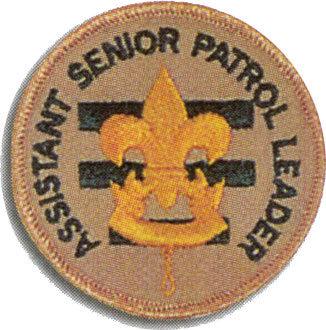
Leadership Position Description
Type: Appointed by the Senior Patrol Leader
Term: 6 months
Reports to: Senior Patrol Leader
Description: The Assistant Senior Patrol Leader is the second highest ranking patrol leader in the troop. The Assistant Senior Patrol Leader acts as the Senior Patrol Leader in the absence of the SPL or when called upon. He also provides leadership to other junior leaders in the troop.
Comments: The most important part of the ASPL position is his work with the other junior leaders. The ASPL should be familiar with the other positions and stay current with the work being done.
Age: none
Rank: 1st Class or higher
Rank: none
Attendance: Active* scout during the previous 6 months. *See Troop Guide for Parents and Scouts for a detailed description of an “Active Scout”.
Training: You must attend the troop Junior Leader Training even if you have attended in the past.
Attendance: You are expected to attend troop meetings, Patrol Leaders’ Council meetings, outings, and service projects. If your attendance is low, or if you have three (3) unexcused absences in a row, you can be removed from office.
Effort: You are expected to give this job your best effort.
Uniform: Set the example by wearing your uniform correctly. This means that you will wear all parts of the troop uniform, shirttail tucked in, with all required badges in their correct locations.
Behavior: Set the example by living the Scout Oath and Law in your everyday life. Show Scout Spirit in everything you say and do.
Attendance: Set the example by being an active Scout. Be on-time for meetings and activities. You must call the Senior Patrol Leader or Scoutmaster if you are not going to be at a meeting or if you suddenly must miss an outing. You also need to make sure that someone will assume your responsibilities.
- Helps the Senior Patrol Leader lead meetings and activities.
- Runs the troop in the absence of the Senior Patrol Leader.
- Helps train and supervise the Troop Scribe, Quartermaster, Instructor, Librarian, Historian, and Chaplain Aide.
- Serves as a member of the Patrol Leader’s Council.
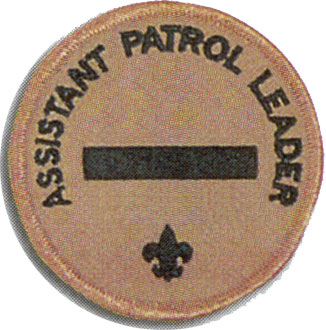
Leadership Position Description
Type: Appointed by the Patrol Leader
Term: 6 months
Reports to: Patrol Leader
Description: The Assistant Patrol Leader is appointed by the Patrol Leader and leads the patrol in his absence.
Comments: Substituting for the Patrol Leader is only part of the Assistant Patrol Leader’s job. The APL actively helps run the patrol.
Age: none
Rank: none
Rank: none
Attendance: Active* scout over the previous 6 months. *See Troop Guide for Parents and Scouts for a detailed description of an “Active Scout”.
Training: You must attend the troop Junior Leader Training even if you have attended in the past.
Attendance: You are expected to attend troop meetings, Patrol Leaders’ Council meetings, outings, and service projects. If your attendance is low, or if you have three (3) unexcused absences in a row, you can be removed from office.
Effort: You are expected to give this job your best effort.
Uniform: Set the example by wearing your uniform correctly. This means that you will wear all parts of the troop uniform, shirttail tucked in, with all required badges in their correct locations.
Behavior: Set the example by living the Scout Oath and Law in your everyday life. Show Scout Spirit in everything you say and do.
Attendance: Set the example by being an active Scout. Be on-time for meetings and activities. You must call the Senior Patrol Leader or Scoutmaster if you are not going to be at a meeting or if you suddenly must miss an outing. You also need to make sure that someone will assume your responsibilities.
- Helps the Patrol Leader plan and steer patrol meetings and activities.
- Helps the Patrol Leader keep patrol members informed.
- Helps the patrol get ready for all troop activities.
- Represents his patrol at Patrol Leader’s Council meetings when the Patrol Leader cannot attend.
- Lends a hand controlling the patrol and building patrol spirit.
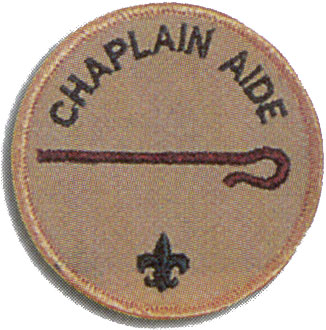
Leadership Position Description
Type: Elected by the Troop Members
Term: 6 months
Reports to: Assistant Senior Patrol Leader
Description: The Chaplain Aide works with the Troop Chaplain to meet the religious needs of Scouts in the troop. He also works to promote the religious awards program.
Comments: “Duty to God” is one of the core beliefs of Scouting. The Chaplain Aide helps everyone in the troop by preparing short religious observations for campouts and other functions. The Chaplain Aide does not always lead the observation himself and can have other troop members’ help.
Age: none
Rank: none
Rank: none
Attendance: Active* scout during the previous 6 months. *See Troop Guide for Parents and Scouts for a detailed description of an “Active Scout”.
Training: You must attend the troop Junior Leader Training even if you have attended in the past.
Attendance: You are expected to attend troop meetings, Patrol Leaders’ Council meetings, outings, and service projects. If your attendance is low, or if you have three (3) unexcused absences in a row, you can be removed from office.
Effort: You are expected to give this job your best effort.
Uniform: Set the example by wearing your uniform correctly. This means that you will wear all parts of the troop uniform, shirttail tucked in, with all required badges in their correct locations.
Behavior: Set the example by living the Scout Oath and Law in your everyday life. Show Scout Spirit in everything you say and do.
Attendance: Set the example by being an active Scout. Be on-time for meetings and activities. You must call the Senior Patrol Leader or Scoutmaster if you are not going to be at a meeting or if you suddenly must miss an outing. You also need to make sure that someone will assume your responsibilities.
- Assists the Troop Chaplain with religious services at troop activities.
- Tells Scouts about the religious emblem program for their faith.
- Makes sure religious holidays are considered during troop program planning.
- Helps plan for religious observance in troop activities.
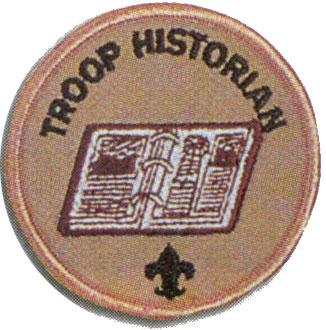
Leadership Position Description
Type: Appointed by the Senior Patrol Leader
Term: 6 months
Reports to: Assistant Senior Patrol Leader
Description: The Troop Historian keeps a historical record or scrapbook of troop activities.
Comments: The true value of a good Historian does not show up until years later. The Historian provides material for displays and presentations of current activities. In addition, the work of the Historian provides a link with the past.
Age: none
Rank: none
Rank: none, but interest in photography is helpful
Attendance: Active* scout during the previous 6 months. *See Troop Guide for Parents and Scouts for a detailed description of an “Active Scout”.
Training: You must attend the troop Junior Leader Training even if you have attended in the past.
Attendance: You are expected to attend troop meetings, Patrol Leaders’ Council meetings, outings, and service projects. If your attendance is low, or if you have three (3) unexcused absences in a row, you can be removed from office.
Effort: You are expected to give this job your best effort.
Uniform: Set the example by wearing your uniform correctly. This means that you will wear all parts of the troop uniform, shirttail tucked in, with all required badges in their correct locations.
Behavior: Set the example by living the Scout Oath and Law in your everyday life. Show Scout Spirit in everything you say and do.
Attendance: Set the example by being an active Scout. Be on-time for meetings and activities. You must call the Senior Patrol Leader or Scoutmaster if you are not going to be at a meeting or if you suddenly must miss an outing. You also need to make sure that someone will assume your responsibilities.
- Gathers pictures and facts about past troop activities and keeps them in a historical file or scrapbook.
- Takes care of troop trophies, ribbons, and souvenirs of troop activities.
- Keeps information about former members of the troop.
Leadership Position Description
Type: Appointed by the Senior Patrol Leader
Term: 6 months
Reports to: Assistant Senior Patrol Leader
Description: The Troop Librarian takes care of troop literature.
Comments: The library contains books of historical value as well as current materials. Altogether, the library is a troop resource worth hundreds of dollars. The Librarian manages this resource for the troop.
Age: none
Rank: none
Rank: none
Attendance: Active* scout during the previous 6 months. *See Troop Guide for Parents and Scouts for a detailed description of an “Active Scout”.
Training: You must attend the troop Junior Leader Training even if you have attended in the past.
Attendance: You are expected to attend troop meetings, Patrol Leaders’ Council meetings, outings, and service projects. If your attendance is low, or if you have three (3) unexcused absences in a row, you can be removed from office.
Effort: You are expected to give this job your best effort.
Uniform: Set the example by wearing your uniform correctly. This means that you will wear all parts of the troop uniform, shirttail tucked in, with all required badges in their correct locations.
Behavior: Set the example by living the Scout Oath and Law in your everyday life. Show Scout Spirit in everything you say and do.
Attendance: Set the example by being an active Scout. Be on-time for meetings and activities. You must call the Senior Patrol Leader or Scoutmaster if you are not going to be at a meeting or if you suddenly must miss an outing. You also need to make sure that someone will assume your responsibilities.
- Sets up and takes care of a troop library
- Keeps records of books and pamphlets owned by the troop.
- Adds new or replacement items as needed.
- Keeps books and pamphlets available for borrowing.
- Keeps a system for checking books and pamphlets in and out.
- Follows up on late returns.
- Issues vouchers for purchase of used merit badge books.
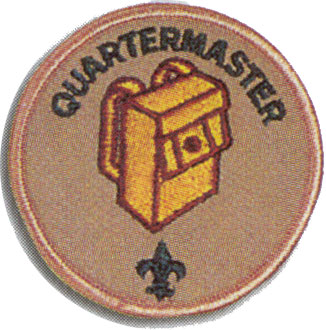
Leadership Position Description
Type: Appointed by the Senior Patrol Leader
Term: 6 months
Reports to: Assistant Senior Patrol Leader
Description: The Troop Quartermaster keeps track of troop equipment and sees that it is in good working order.
Comments: The Quartermaster does most of his work around campouts. There are times when the Quartermaster has to be available to check equipment in and out.
Age: none
Rank: none
Rank: none
Attendance: Active* scout over the previous 6 months. *See Troop Guide for Parents and Scouts for a detailed description of an “Active Scout”.
Training: You must attend the troop Junior Leader Training even if you have attended in the past.
Attendance: You are expected to attend troop meetings, Patrol Leaders’ Council meetings, outings, and service projects. If your attendance is low, or if you have three (3) unexcused absences in a row, you can be removed from office.
Effort: You are expected to give this job your best effort.
Uniform: Set the example by wearing your uniform correctly. This means that you will wear all parts of the troop uniform, shirttail tucked in, with all required badges in their correct locations.
Behavior: Set the example by living the Scout Oath and Law in your everyday life. Show Scout Spirit in everything you say and do.
Attendance: Set the example by being an active Scout. Be on-time for meetings and activities. You must call the Senior Patrol Leader or Scoutmaster if you are not going to be at a meeting or if you suddenly must miss an outing. You also need to make sure that someone will assume your responsibilities.
- Keeps records on patrol and troop equipment
- Makes sure equipment is in good working condition
- Issues equipment and makes sure it is returned in good condition
- Makes suggestions for new or replacement items
- Works with the Troop Committee member responsible for equipment
- Gets the US, troop, and patrol flags for meetings and ceremonies and puts them away afterwards.
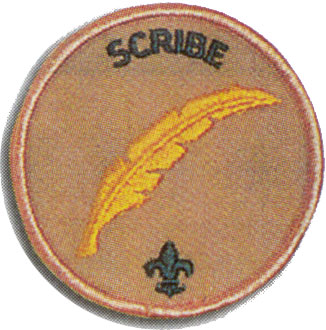
Leadership Position Description
Type: Appointed by the Senior Patrol Leader
Term: 6 months
Reports to: Assistant Senior Patrol Leader
Description: The Scribe keeps the troop records. He records the activities of the Patrol Leaders’ Council and keeps a record of dues, advancement, and Scout attendance at troop meetings.
Comments: To be a good Scribe you need to attend nearly all troop and Patrol Leaders’ Council meetings.
Age: none
Rank: none
Rank: none
Attendance: Active* scout over the previous 6 months. *See Troop Guide for Parents and Scouts for a detailed description of an “Active Scout”.
Training: You must attend the troop Junior Leader Training even if you have attended in the past.
Attendance: You are expected to attend troop meetings, Patrol Leaders’ Council meetings, outings, and service projects. If your attendance is low, or if you have three (3) unexcused absences in a row, you can be removed from office.
Effort: You are expected to give this job your best effort.
Uniform: Set the example by wearing your uniform correctly. This means that you will wear all parts of the troop uniform, shirttail tucked in, with all required badges in their correct locations.
Behavior: Set the example by living the Scout Oath and Law in your everyday life. Show Scout Spirit in everything you say and do.
Attendance: Set the example by being an active Scout. Be on-time for meetings and activities. You must call the Senior Patrol Leader or Scoutmaster if you are not going to be at a meeting or if you suddenly must miss an outing. You also need to make sure that someone will assume your responsibilities.
- Attends and keeps a log of Patrol Leaders’ Council meetings
- Records individual Scout attendance and dues payments.
- Records individual Scout advancement progress
- Works with the Troop Committee members responsible for records and finance.
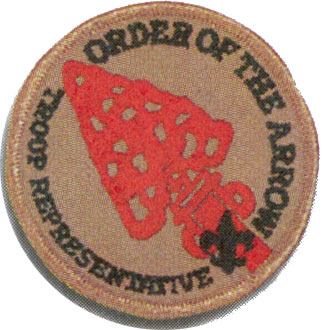
Leadership Position Description
Type: Elected by the Troop or Appointed by SPL with SM approval
Term: 6 months
Reports to: Assistant Senior Patrol Leader
Description: An Order of the Arrow Troop Representative is a youth liaison serving between the local OA lodge or chapter and his troop. In his troop, he serves as a communication and programmatic link to the Arrowman and adult leaders and Scouts who are not presently members of the Order. He does this in a fashion that strengthens the mission of the lodge and purpose of the Order. By setting a good example, he enhances the image of the Order as a service arm to his troop.
Comments: More information for the OA Troop Representative can be found on the Troop Representative page on the OA nation website.
Age: Under 18 years old
Rank: First class or higher
Rank: OA Member in good standing
Attendance: Active* scout over the previous 6 months. *See Troop Guide for Parents and Scouts for a detailed description of an “Active Scout”.
Training: It is recommended that you attend the troop Junior Leader Training.
Attendance: You are expected to attend all monthly OA Chapter Meetings held on the first Wednesdays of each month. You should attend 60% of all troop meetings, Patrol Leaders’ Council meetings, outings, and service projects. If your attendance is low, or if you have three (3) unexcused absences in a row, you can be removed from office.
Effort: You are expected to give this job your best effort.
Uniform: Set the example by wearing your uniform correctly. This means that you will wear all parts of the troop uniform, shirttail tucked in, with all required badges in their correct locations.
Behavior: Set the example by living the Scout Oath and Law in your everyday life. Show Scout Spirit in everything you say and do.
Attendance: Set the example by being an active Scout. Be on-time for meetings and activities. You must call the Senior Patrol Leader or Scoutmaster if you are not going to be at a meeting or if you suddenly must miss an outing. You also need to make sure that someone will assume your responsibilities.
- Serves as a communication link between the lodge or chapter and the troop.
- Encourages year round and resident camping in the troop.
- Encourages older Scout participation in high adventure programs.
- Encourages Scouts to actively participate in community service projects.
- Assists with leadership skills training in the troop.
- Encourages Arrowmen to assume leadership positions in the troop.
- Encourages Arrowmen in the troop to be active participants in the lodge and/or chapter activities and to seal their membership in the Order by becoming Brotherhood members.
- Sets a good example
- Enthusiastically wears the Scout uniform correctly.
- Lives by the Scout Oath, Scout Law and OA Obligation
- Shows Scout spirit








